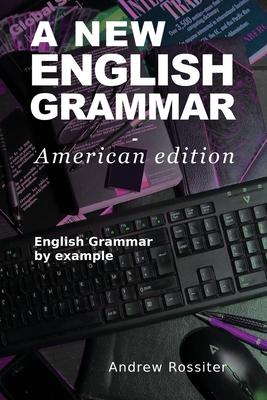A New English Grammar, American edition, is a reference grammar whose aim is to explain the workings of the English language not just for second language learners (ESL / EFL) but also for teachers and students of English as a first language, i.e. native English speakers.
From WAESOL Educator, Washington, 2023
"This book is one of the most practical grammar reference books we've seen, where each grammar point is explained in a very simple way with helpful examples as well as warnings about usage pitfalls. "
From CATESOL, the California ESL Teachers' Association, 2022:
"This concise and useful reference book ..... will make for a significant and appreciated companion to the majority of ESL textbooks or American English grammar books for students involved in the complexities of learning English as their second, third or fourth language."
This American English edition is a new version of the author's acclaimed Descriptive Grammar of English, first published in 2020.
While the grammar of American English and of British English (or International English) are essentially the same, there are some differences, and in this new American English edition, priority is given to American usage, making this an ideal reference book for teachers and students in high school, and for anyone else wanting to gain a clearer understanding of English grammar. Examples of grammar usage have been selected to reflect the life and interests of readers in the United States, making them relevant to the experiences of American students or international students wishing to familiarize themselves with life and culture in the USA.
This English Grammar uses American English spelling in those few cases where it differs from British English.
It is important however to stress that American English and British English are one and the same language. The biggest differences between the two are phonetic, not grammatical. Native English speakers can usually tell if a speaker is from North America or from Britain, or maybe from Australia or some other part of the English-speaking world; but they will find it much harder to notice, without actually thinking about it, whether a written document is in American English or in British English.
There are a few telltale signs; Americans write realize where the British will write realise; Americans write traveled while the British write travelled... and in this case it is the American spelling that respects the traditional rules concerning the doubling or not of consonants in English. In the twenty-first century however, there is so much movement of both written texts and audio documents that the differences between American English and British English are becoming blurred. People in the USA read books and magazine articles, not to mention websites, written in British English, and people in the UK read plenty of books, articles and websites written in American English. While most people in the USA who use a spell-checker when writing will use one that is set up for American English, some will use one set up for British or international English.... and if a few alert readers may notice the difference, most will not, and hardly any will be unduly worried.
Still it makes sense for anyone in the USA, or international users who have more contact with American speakers, to look at grammar in an American context, which is what this grammar book does.
